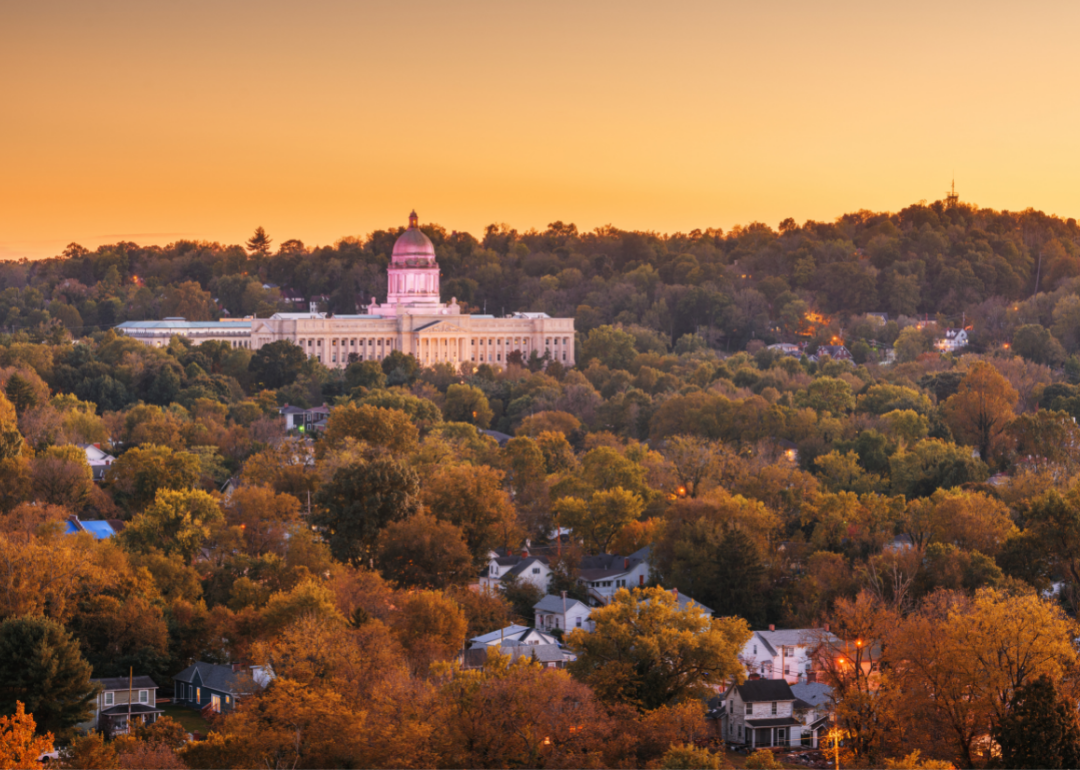
See how Kentucky will be affected if Roe v. Wade is overturned
See how Kentucky will be affected if Roe v. Wade is overturned
One historic decision has been endlessly passed around states over the last year. Roe v. Wade expressly protects a pregnant person's right to choose to have an abortion. It's under review by a now supermajority conservative Supreme Court, but reports suggest it could be struck down at any moment, as more and more states bring their own abortion laws to the highest court in the land.
At the center of the pending case is a 2018 Mississippi law that banned most abortions after 15 weeks of pregnancy. Mississippi's attorney general directly asked the court to not only uphold the law but overturn Roe v. Wade, saying states should have more power over abortion access. Now, the Supreme Court has allowed a Texas law banning abortions at six weeks to stay in place until the lawsuit is resolved.
To find out which states would be most affected by this decision, Stacker consulted a July 2019 study published in the reproductive health journal Contraception, updated in 2021 by Caitlin Myers, a professor at Middlebury College. The study analyzed the impact of a post-Roe world by analyzing states' current laws and political climate to identify states that would be at a high risk of outlawing abortion.
Eight states maintain so-called "trigger bans" that would immediately outlaw abortion if Roe v. Wade were overturned. Based on this and other information, any state that could quickly enact restrictions if Roe v. Wade was overturned is listed as "high-risk." States could be classified as "high-risk" even if they have no laws currently on the books, but simply a political climate unamiable to abortion. Then, using census demographic data, the study calculated the number of women that would be affected by an increase in travel time to the nearest abortion clinic in a scenario where all high-risk states ban abortion.
The makeup of the surrounding states is enough to limit abortion access by an over 1000% increase in distance. Keep reading to see which states will be most affected if Roe v. Wade is reversed or read the national story here.
Kentucky by the numbers
- Policies: Trigger ban, high-risk
- If abortion bans take effect in all high-risk states:
--- Predicted change in abortion rate: -30.4%
--- Affected population: 848,023 (100.0% of women aged 15-44)
--- New average distance to nearest abortion clinic: 266 miles (315.6% increase)
- Present day:
--- Abortion facilities: 2
--- Average distance to nearest abortion clinic: 64 miles
In former Kentucky Gov. Matt Bevin's quest to become "the most pro-life governor in America,"he signed four anti-abortion bills during his term, two of which were blocked by federal judges. House Bill 148, Kentucky's full ban on abortion, is unenforceable while Roe v. Wade is still intact. The state's current governor, DemocratAndy Beshear, is pro-choice. Beshear has had difficulty stopping pro-life legislation from becoming law since the state House and Senate have a Republican supermajority.
States have already employed many kinds of restrictions, including but not limited to: parental consent for young women seeking abortions, bans on telemedicine for medicated abortions, mandated counseling and ultrasounds before the procedure, and TRAP laws, which impose burdensome medical standards such as hospital-admitting privileges on abortion clinics. Florida is now considering a 15-week abortion limit in their state legislature just as the 2022 session begins.
Many states with either anti-choice governors or constituents against abortion are attacking Roe v. Wade by enacting laws they can't enforce, in case the Supreme Court decides in 2022 to overturn the decision. A decision on the famous Mississippi case is not expected until June 2022, but the pro-life movement is trying to kick down the door.
Keep reading to see which states will be most affected if Roe v. Wade is overturned.
States that will be most affected if Roe v. Wade is overturned
#1. Arizona
- Policies: High-risk
- If abortion bans take effect in all high-risk states:
--- Predicted change in abortion rate: -40.3%
--- Affected population: 1,316,221 (94.1% of women aged 15-44)
--- New average distance to nearest abortion clinic: 247 miles (1352.9% increase)
- Present day:
--- Abortion facilities: 8
--- Average distance to nearest abortion clinic: 17 miles
#2. Michigan
- Policies: High-risk
- If abortion bans take effect in all high-risk states:
--- Predicted change in abortion rate: -39.6%
--- Affected population: 1,876,586 (99.9% of women aged 15-44)
--- New average distance to nearest abortion clinic: 239 miles (1393.8% increase)
- Present day:
--- Abortion facilities: 26
--- Average distance to nearest abortion clinic: 16 miles
#3. South Carolina
- Policies: High-risk
- If abortion bans take effect in all high-risk states:
--- Predicted change in abortion rate: -38.6%
--- Affected population: 984,181 (100.0% of women aged 15-44)
--- New average distance to nearest abortion clinic: 267 miles (790.0% increase)
- Present day:
--- Abortion facilities: 3
--- Average distance to nearest abortion clinic: 30 miles



